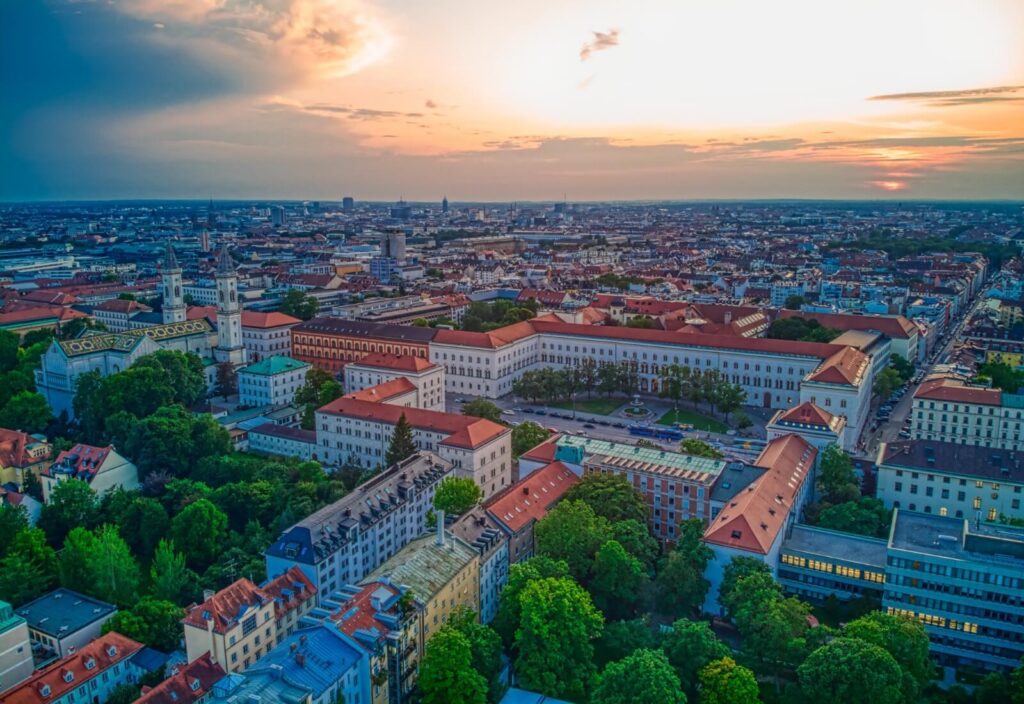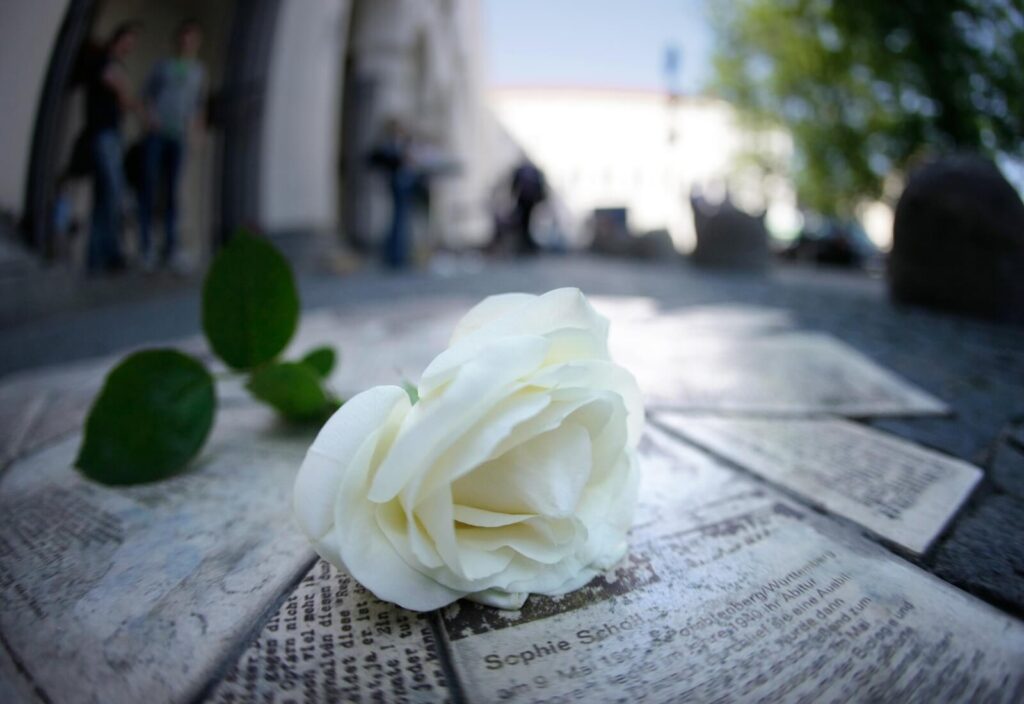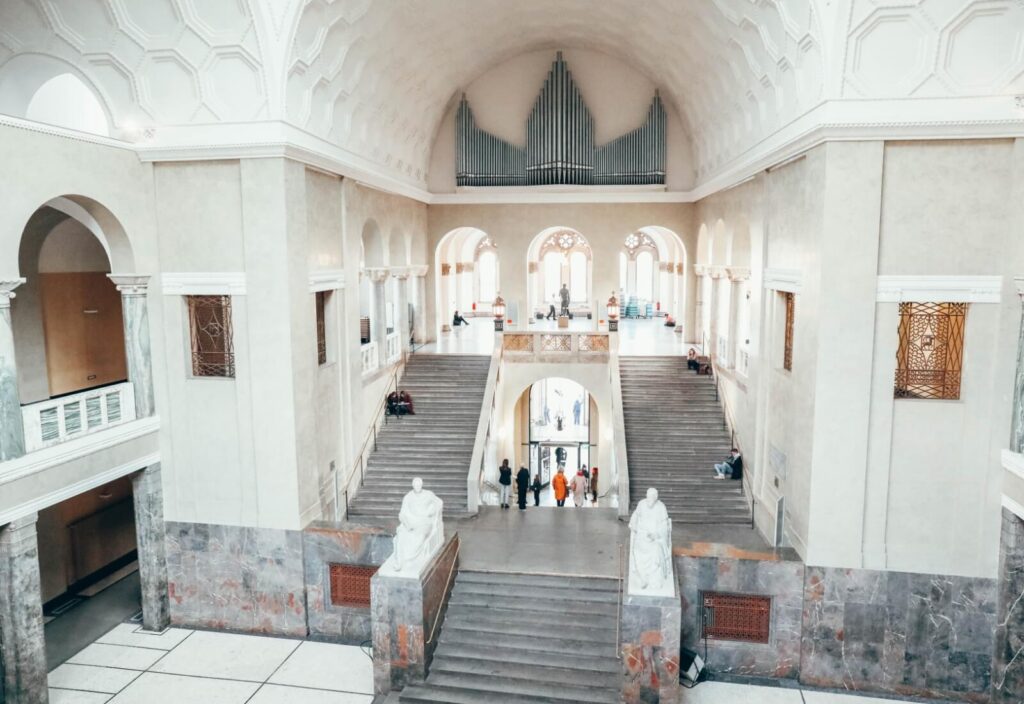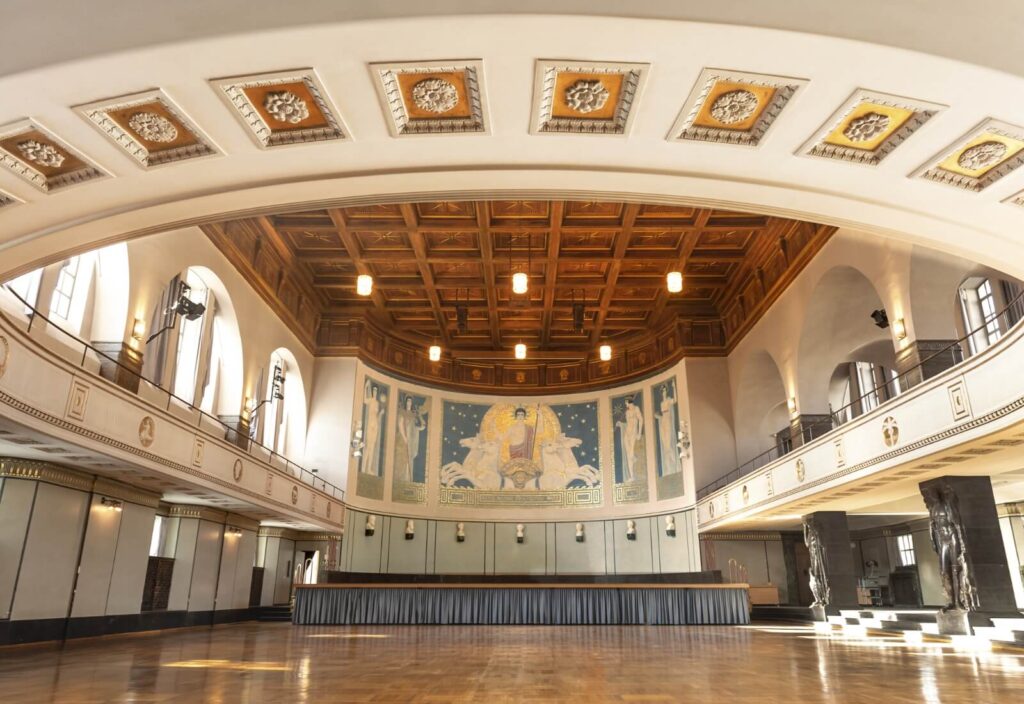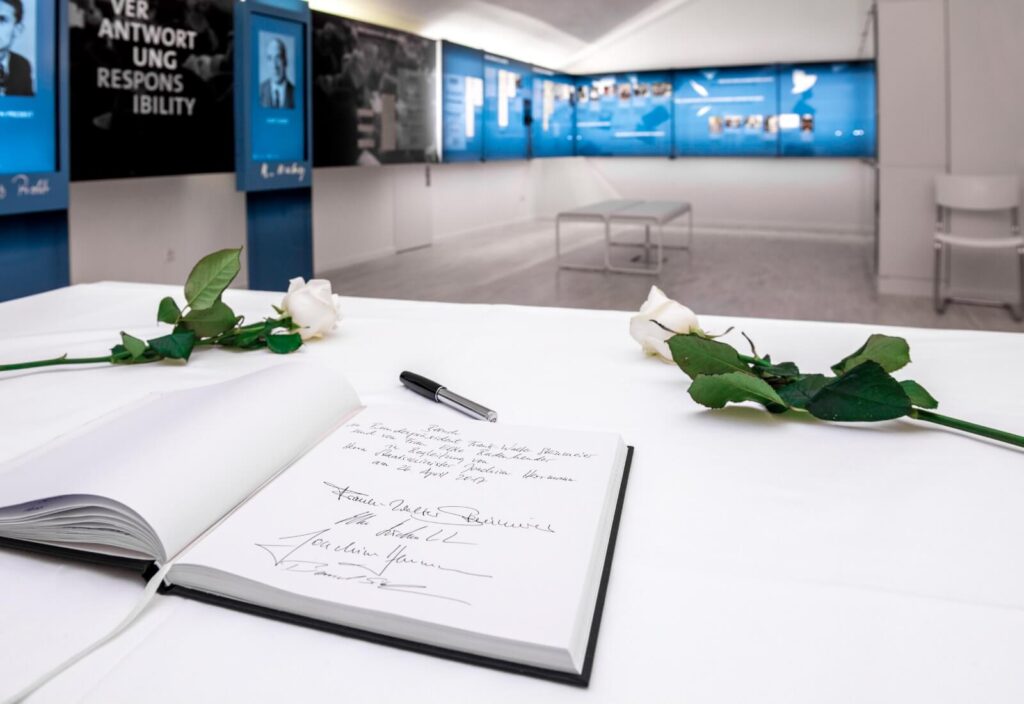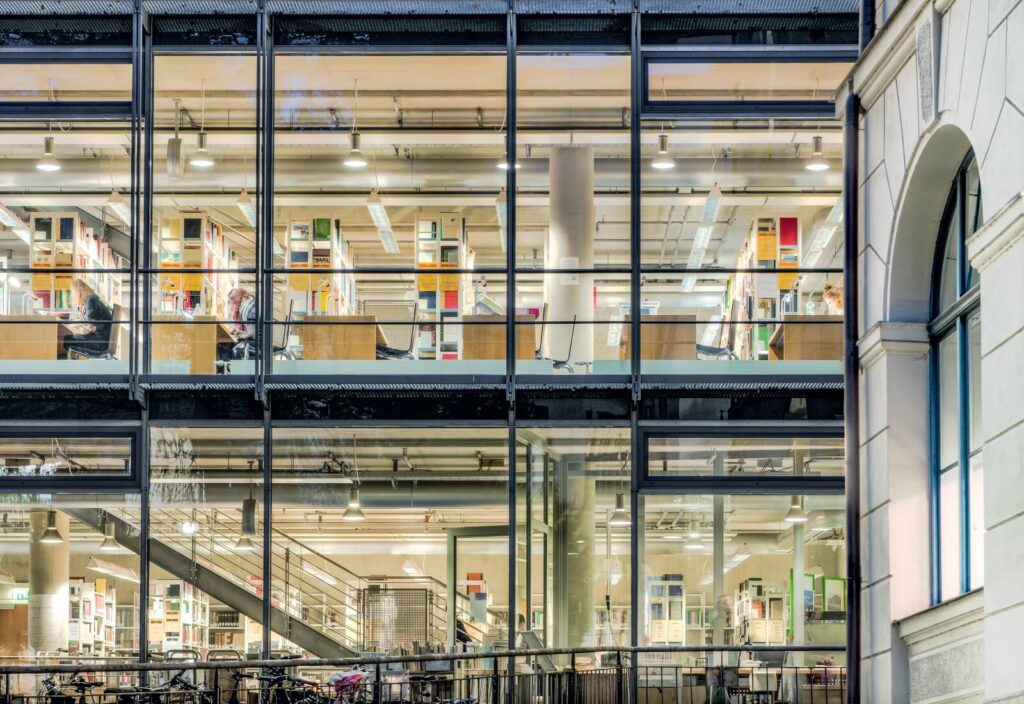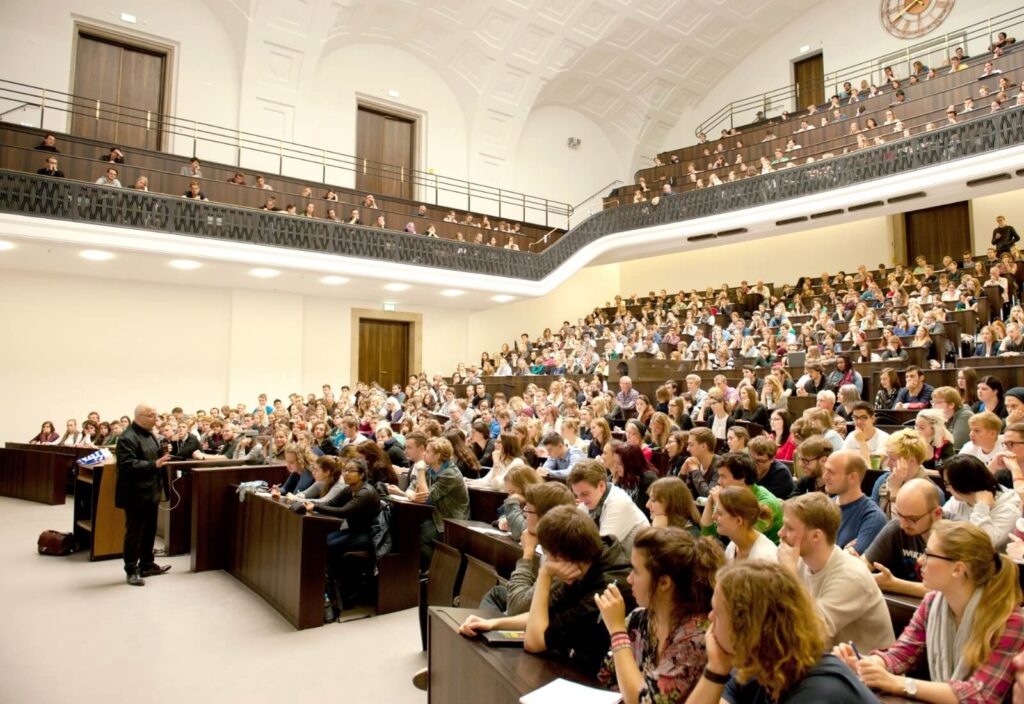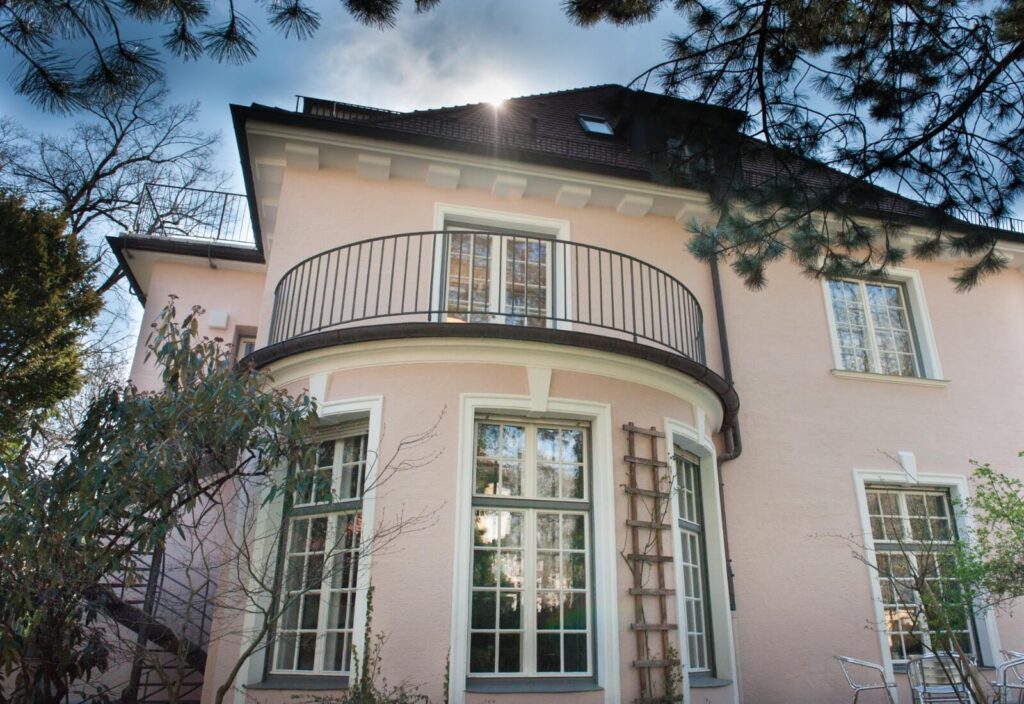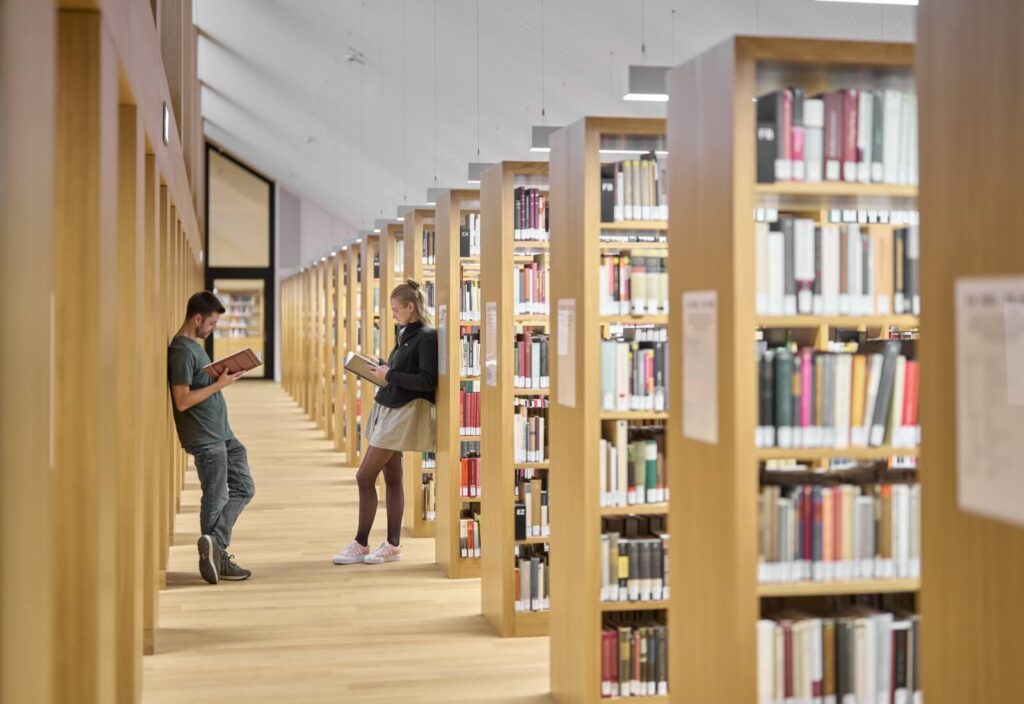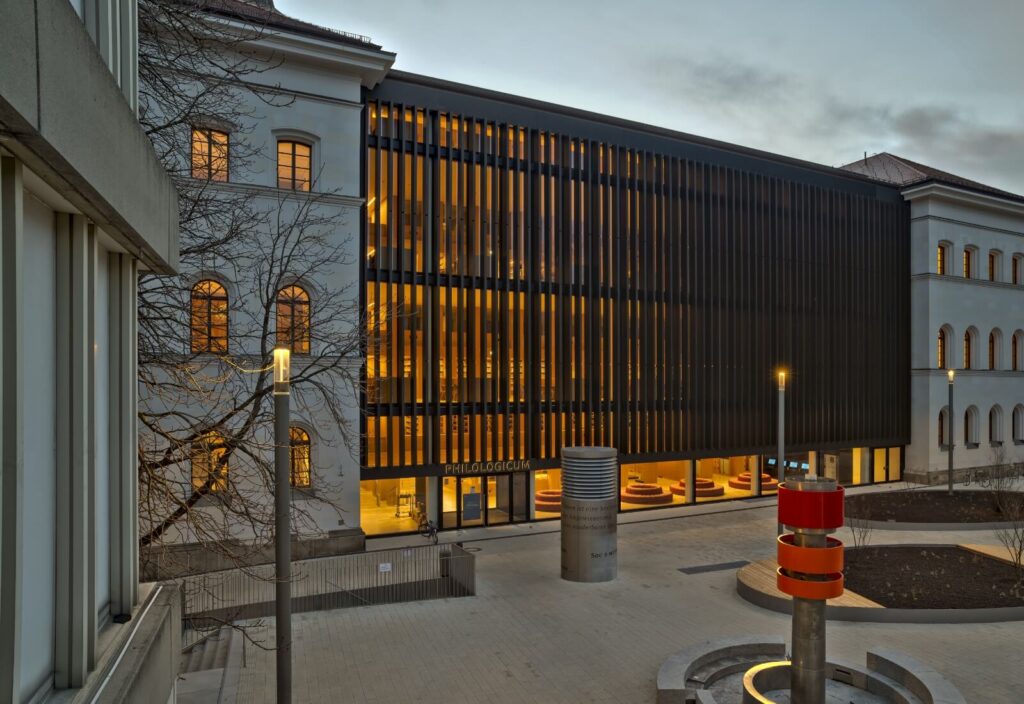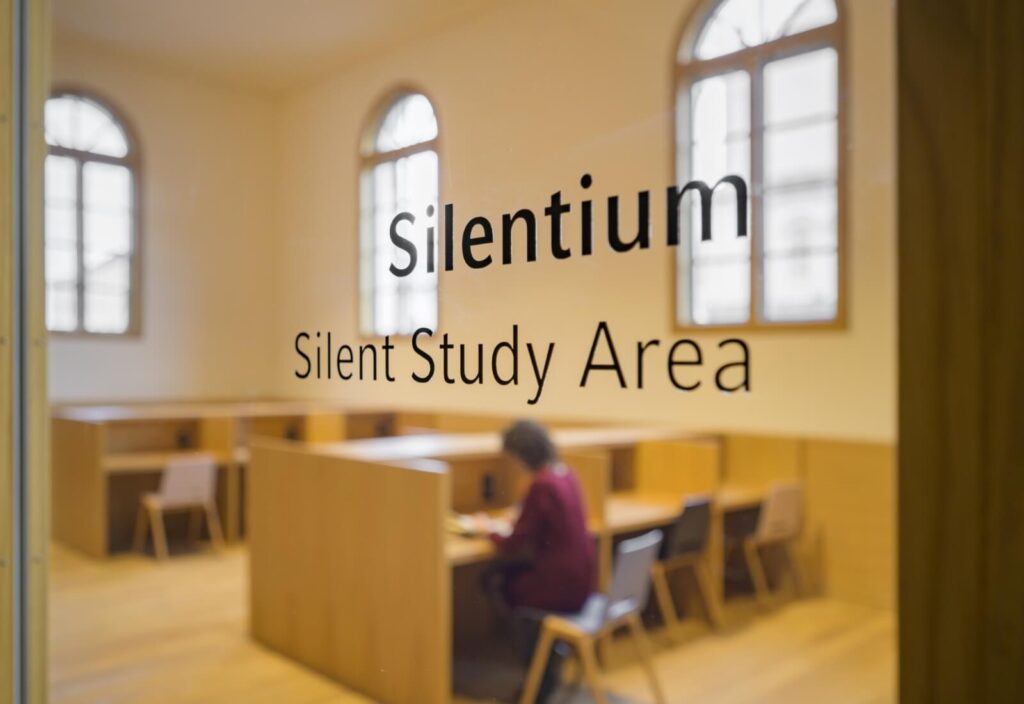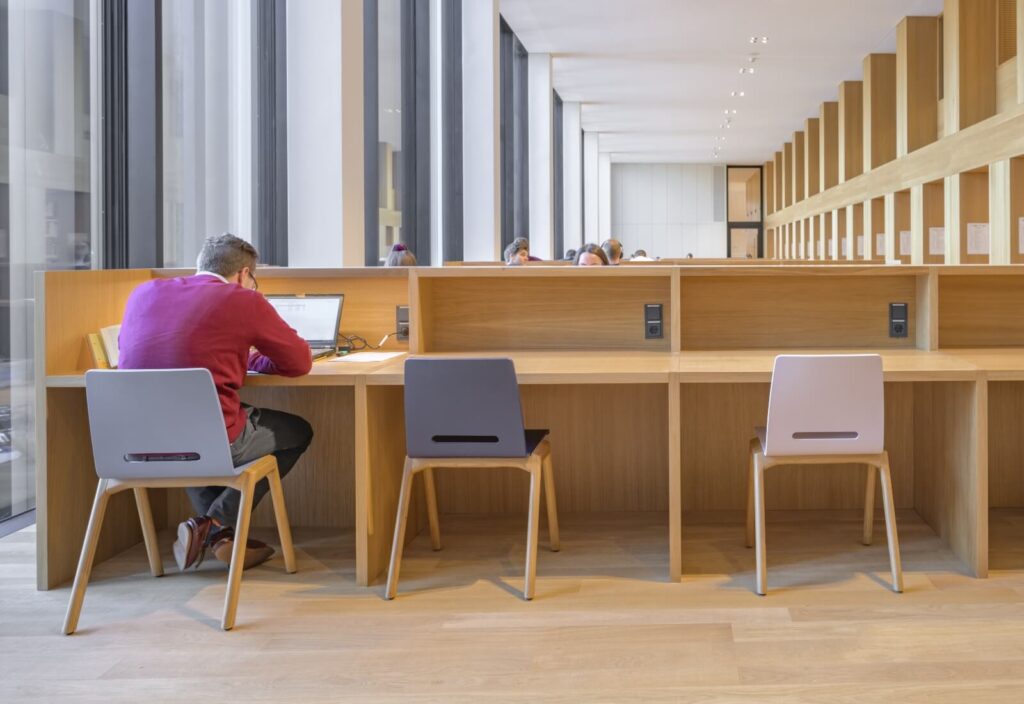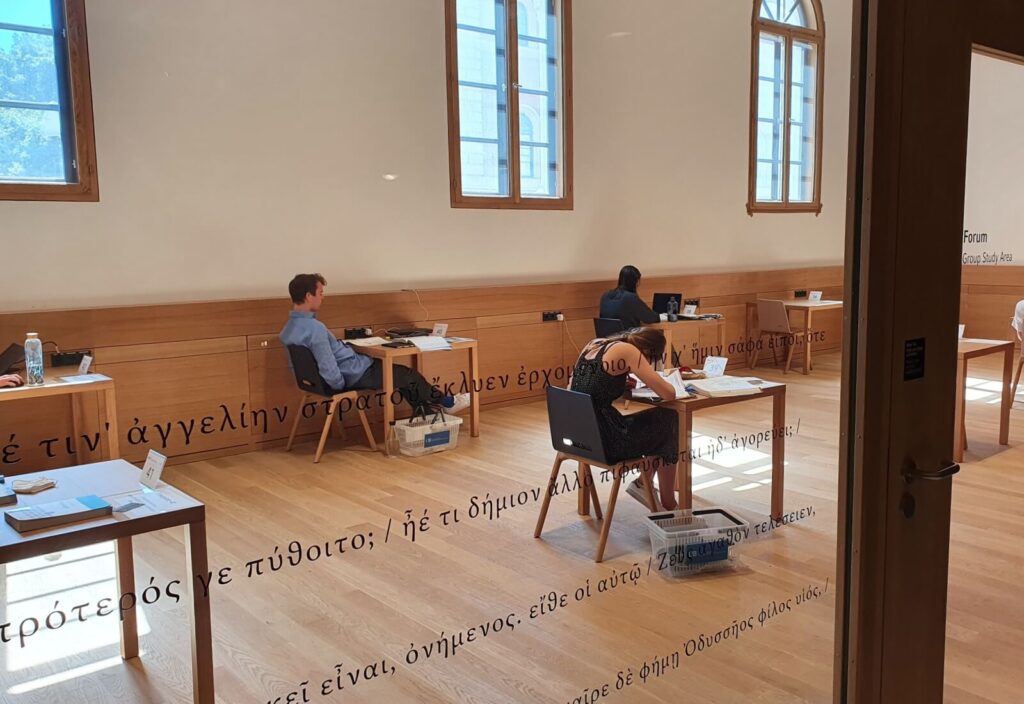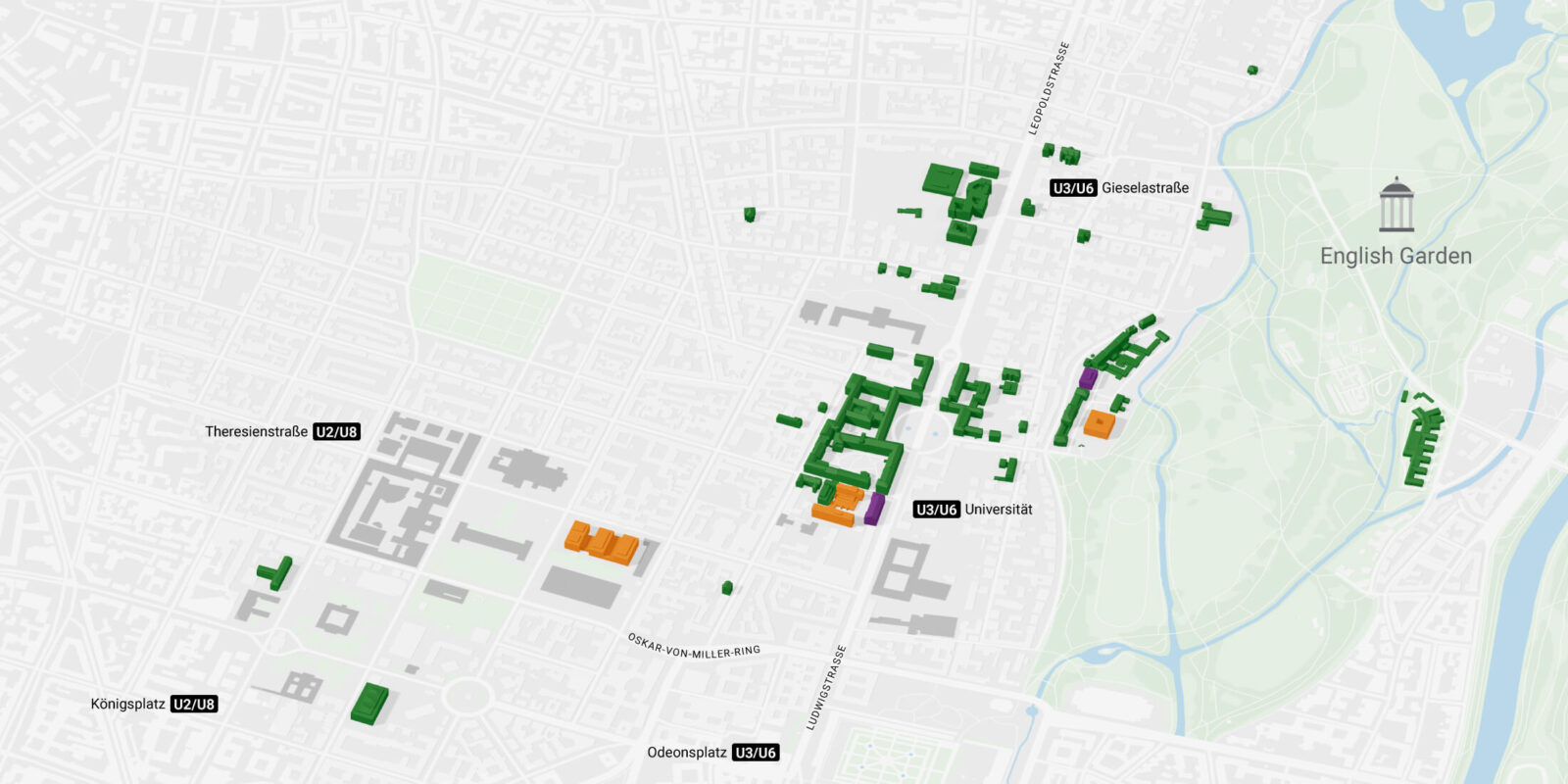
University Library & Services
Campus Geschwister-Scholl-Platz
Just two subway stations from Marienplatz at the very heart of Munich, the historical Main Building with its famous atrium has been a distinctive part of the cityscape since 1840. Today, the building is primarily home to subjects in the humanities and the social sciences, such as law, economics, business studies, philosophy, and theology. Its most famous lecture halls are the Audimax, which seats over 800, and the Great Aula, where the first freely elected post-war Bavarian state parliament convened in 1946.
Other university buildings in Schwabing and Maxvorstadt house facilities belonging to various faculties and are devoted to everything from history, culture, languages, and literature to psychology and the social and educational sciences.
Libraries, museums, and archives: infrastructure for top-level research
The University Library is directly adjacent to the Main Building. It holds over 5 million items in the Main Library and at 15 other locations. The Bavarian State Library has 10.5 million titles and holds an outstanding collection of special objects (such as maps, image archives, and sketchbooks) and one of the largest manuscript collections in the world. Many excellent museums – like Munich’s trio of “Pinakothek” art galleries, the Brandhorst Museum, the Glyptothek gallery of ancient sculpture, and the State Museum of Egyptian Art – and archives – such as the Main Bavarian State Archives – are also located in close proximity to the Main Building. This provides rich opportunities for collaborations.
Campus development
The consolidation of the Faculty of Physics on Campus English Garden and the move of the Faculty of Mathematics, Informatics and Statistics and of the Department of Earth and Environmental Sciences to Campus Sendlinger Tor have created major development opportunities around Geschwister-Scholl-Platz for the humanities and social sciences.
There are plans to establish a Center for Languages and Literatures in Schellingstrasse, which will bring together the scattered facilities in this domain and offer scope for expansion. The opening of the Philologicum, the main library for linguistics and literary studies, was a milestone on this road in 2019. In addition, the buildings on Schellingstrasse 3 will be renovated and modernized. And the spaces on the other side of the street that will become vacant when the physics facilities move out will also be incorporated into the overall concept.
The redevelopment of the ensemble of buildings at Theresienstrasse 37-41 will provide an opportunity to further enhance the Munich Kunstareal district with its celebrated museums. There are plans for an innovative project at the intersection of art and science, which will be one of a kind in Europe and will feature the participation of LMU’s Department of Arts.
Philologicum
The state-of-the-art Philologicum opened its doors in 2019. It is the largest specialist library at LMU and houses the university’s holdings in the fields of classical, German, Romance, and Slavic philology as well as the philology-related holdings of the former Central Textbook Collection. For the first time, the roughly 420,000 volumes of all linguistic and literary disciplines are united in one place – in bright modern premises where esthetics combine with advanced building engineering. The Philologicum offers 740 individual and group workstations, a workstation for the visually impaired, a mother-and-child room, and smaller work rooms. With its comprehensive, interdisciplinary holdings and contemporary facilities, the new building does justice to the current needs of study and research as well as the desire for communication and exchange.
News from Campus Geschwister-Scholl-Platz
The new specialist library Philologicum opened for users today.
